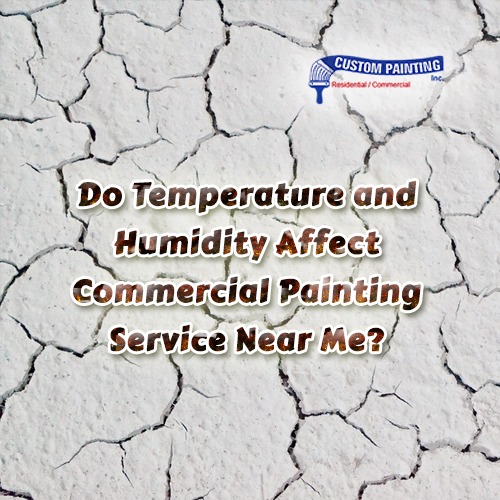There are many factors that come into play with commercial painting services near me. Two of them are weather and humidity that may positively or negatively affect your painting job.
You consider yourself fortunate if you live in certain states where the only things you will have to worry about are winds and some rain showers. In the case of interior painting, it can be achieved with little difficulty no matter the weather. But with exterior painting, the application might be quite challenging especially if you live in areas that experience extreme weather conditions.
That’s why it’s important to know when the best time is to paint, especially outside the establishment or facility. What temperature is too hot or too cold to paint? What’s the best season to paint? And what’s the season to hold off painting for the time being?
Since temperature and humidity are unavoidable, commercial painters will have no other choice but to make certain adjustments or sometimes put off painting until the weather becomes ideal for it. Commercial painters know what types of paint they should use to conform to (or even resist) the temperature and humidity changes. For example: for temperatures from 45 to 90 degrees Fahrenheit, it calls for the use of oil-based paints; for temperatures over 50 degrees Fahrenheit, latex (water-based) and acrylic paints usually work better.
Painting under cold temperatures
When you go out and paint under cold temperatures, the paint may not adhere properly. It’s likely to thicken, and a paint that’s thick will take longer to dry since it retains much of the moisture. Result is paint that’s sagging – and under freezing temperatures, it will crystallize quickly.
The trick that the best commercial painters in Pleasanton and the surrounding area know is to apply paint before evening comes, as temperatures go down the freezing mark during this time. This will give the paint to cure itself properly throughout the daytime.
Painting under hot temperatures
Heat may be needed to speed up the paint’s drying and curing process, but painting under excessively hot temperatures can also negatively affect the painting job. While the paint may dry quickly, it may dry too quickly that there’s no room for it to cure itself properly. Result is various surface problems like blistering and “alligatoring” (patterned cracks that resemble an alligator skin). Paint brushes and rollers are also likely to dry too fast under too high temperature, thus becoming hardened and rendering themselves unusable.
Extreme temperature fluctuations: how to avoid them
Even in just a single day, it may experience extreme temperature fluctuations which may bring challenges to commercial painters. Fluctuations in temperature is likely to cause slow and uneven curing and drying of paint which may eventually lead to various surface problems.
When’s the best time to paint?
That’s why sometimes, commercial painters prefer to paint during the late summer or early autumn. They see these periods as an ideal time to paint because temperatures are stable and extreme weather changes are least likely to happen. But it still depends on the location.
Humidity
Besides changes in temperature, humidity should also be taken into consideration. Commercial painters prefer to paint in low humidity because there’s less moisture in the air. The lesser the moisture air, the drier it becomes – and the faster the paint dries and cures.
High humidity, on the other hand, comprises of high level of dampness in the air, thus it will take longer for the paint to dry and cure. That’s why it’s not advisable to apply the paint on a damp surface because the water will enter the paint film, which has yet to get itself dry. Another, a wet surface will attract dust and soot, adding to more adhesion problems – not to mention it will make the whole job looking a lot dirtier.
Good weather, good temperature and just the right level of humidity are some of the factors of successful commercial painting services near me. When you find out that the weather is too harsh or the changes in temperature are way too extreme, it’s better to wait first until the temperature and humidity levels become more suitable for painting (especially exterior painting).

